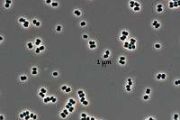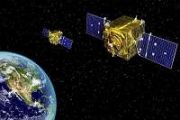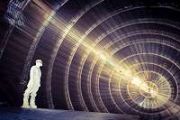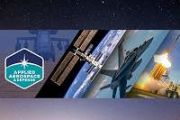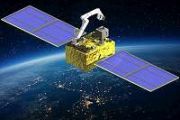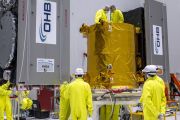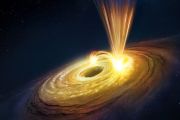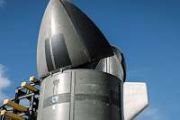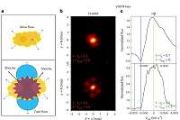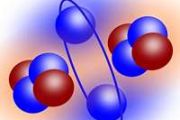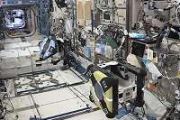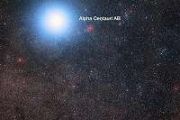
Copernical Team
Nuclear fusion hit a milestone thanks to better reactor walls
 Scientists at a laboratory in England have shattered the record for the amount of energy produced during a controlled, sustained fusion reaction. The production of 59 megajoules of energy over five seconds at the Joint European Torus - or JET - experiment in England has been called "a breakthrough" by some news outlets and caused quite a lot of excitement among physicists. But a common line rega
Scientists at a laboratory in England have shattered the record for the amount of energy produced during a controlled, sustained fusion reaction. The production of 59 megajoules of energy over five seconds at the Joint European Torus - or JET - experiment in England has been called "a breakthrough" by some news outlets and caused quite a lot of excitement among physicists. But a common line rega Tianzhou 2 re-enters Earth's atmosphere, mostly burns up
 China's Tianzhou 2 cargo spaceship fell back to Earth on Thursday afternoon with most of its body burnt up during the reentry process, according to the China Manned Space Agency.
The agency said in a statement the robotic craft started to enter the atmosphere around 6:40 pm under the ground control and the extreme heat caused by air friction dismantled and destroyed most of the ship. A few
China's Tianzhou 2 cargo spaceship fell back to Earth on Thursday afternoon with most of its body burnt up during the reentry process, according to the China Manned Space Agency.
The agency said in a statement the robotic craft started to enter the atmosphere around 6:40 pm under the ground control and the extreme heat caused by air friction dismantled and destroyed most of the ship. A few York Space Systems wins 2nd major contract from Space Development Agency
 York Space Systems (York), a Denver-based aerospace company dedicated to complete space mission solutions, has announced another award from the Space Development Agency (SDA), a $382 million contract to York to deliver 42 satellites in support of SDA's Tranche 1 Transport Layer (T1TL). York will produce these satellites, built on the LX-CLASS standard commercial platform, in the new facility for
York Space Systems (York), a Denver-based aerospace company dedicated to complete space mission solutions, has announced another award from the Space Development Agency (SDA), a $382 million contract to York to deliver 42 satellites in support of SDA's Tranche 1 Transport Layer (T1TL). York will produce these satellites, built on the LX-CLASS standard commercial platform, in the new facility for UK Space Command contracts with SSTL for Carbonite+ satellite
 Surrey Satellite Technology Ltd (SSTL) has signed a 22m pound contract with Defence Equipment and Support on behalf of UK Space Command for a 150kg satellite based on SSTL's Carbonite+. Project TYCHE is the first satellite procurement for the MINERVA programme which is a key enabler in the development of the foundation for a UK Space-based Intelligence Surveillance and Reconnaissance (ISR) const
Surrey Satellite Technology Ltd (SSTL) has signed a 22m pound contract with Defence Equipment and Support on behalf of UK Space Command for a 150kg satellite based on SSTL's Carbonite+. Project TYCHE is the first satellite procurement for the MINERVA programme which is a key enabler in the development of the foundation for a UK Space-based Intelligence Surveillance and Reconnaissance (ISR) const Benchmark Space Systems triples production capacity to meet thruster and in-space mobility demand
 Fueled by major Series A funding and a strong cadence of upcoming government and commercial space missions, Benchmark Space Systems has announced it is tripling production capacity and doubling manufacturing and technical staff to meet huge demand for its Starling and Halcyon propulsion systems.
Benchmark is scaling up to build more than 150 systems over the next eighteen months to enable
Fueled by major Series A funding and a strong cadence of upcoming government and commercial space missions, Benchmark Space Systems has announced it is tripling production capacity and doubling manufacturing and technical staff to meet huge demand for its Starling and Halcyon propulsion systems.
Benchmark is scaling up to build more than 150 systems over the next eighteen months to enable Lynk announces deployment of world's first commercial-ready cell-tower-in-space
 Lynk Global, Inc. (Lynk), the world's leading satellite-direct-to-phone telecoms company, has announced the successful launch, deployment, and initial on-orbit check-out of Lynk Tower 1. The spacecraft is the company's sixth 'cell-tower-in-space' satellite and is now in position to become the world's first commercial cell-tower-in-space. Lynk Tower 1 is the first satellite covered by Lynk's appl
Lynk Global, Inc. (Lynk), the world's leading satellite-direct-to-phone telecoms company, has announced the successful launch, deployment, and initial on-orbit check-out of Lynk Tower 1. The spacecraft is the company's sixth 'cell-tower-in-space' satellite and is now in position to become the world's first commercial cell-tower-in-space. Lynk Tower 1 is the first satellite covered by Lynk's appl Introducing ESA Careers Week: 2-5 May 2022
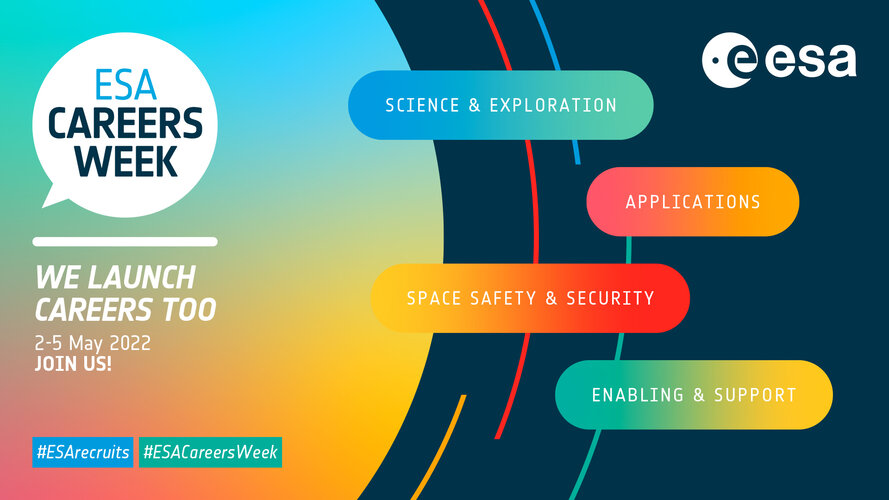
Want to find out about applying for a job at ESA? Want to hear about the projects our teams are working on? Interested in joining our online job fair? You can do all this and more at ESA Careers Week from 2 - 5 May — save the date!
ESA astronaut performs simulated polar Moon landing
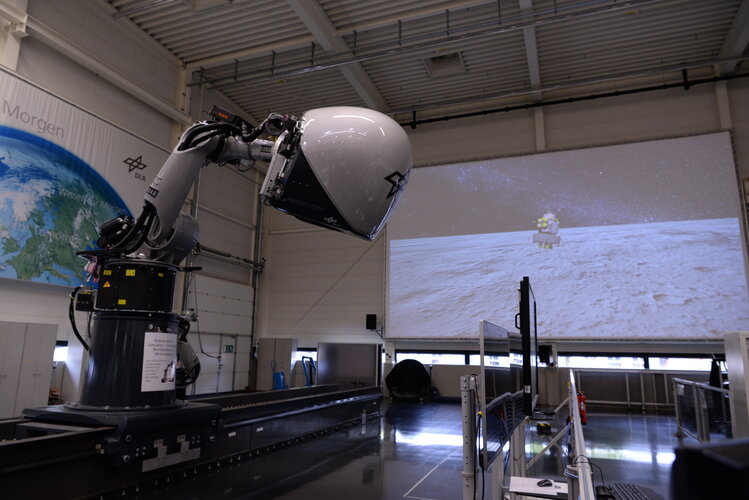
Side-lit by the Sun, its heavily cratered surface mired in shadow, the south pole of the Moon represents a highly challenging lunar landing target. Italian ESA astronaut Roberto Vittori took to an advanced flight simulator to try out a mock polar touchdown as part of a project to design a ‘human-in-the-loop’ lunar landing system.
SpaceX delivers several NanoAvionics satellites to orbit
 Friday's SpaceX Transporter-4 mission included three satellites built by smallsat mission integrator NanoAvionics for multiple customers.
MP42 is NanoAvionics' largest satellite built and launched so far, based on one of the first commercially available modular microsatellite buses in the industry. MP42 is a rideshare mission, and part of the company's ongoing program. It's hosting multipl
Friday's SpaceX Transporter-4 mission included three satellites built by smallsat mission integrator NanoAvionics for multiple customers.
MP42 is NanoAvionics' largest satellite built and launched so far, based on one of the first commercially available modular microsatellite buses in the industry. MP42 is a rideshare mission, and part of the company's ongoing program. It's hosting multipl SpaceX delivers Blue Canyon built GNOMES-3 microsat to orbit for PlanetiQ
 Small satellite manufacturer and mission services provider Blue Canyon Technologies LLC ("BCT" or "Blue Canyon"), a wholly-owned subsidiary of Raytheon Technologies, hsa announced the successful launch of GNOMES-3, aboard the SpaceX Falcon 9 Transporter-4 mission on April 1.
GNOMES-3 is an ESPA-class microsat spacecraft bus, which Blue Canyon manufactured for PlanetiQ. BCT provided the mic
Small satellite manufacturer and mission services provider Blue Canyon Technologies LLC ("BCT" or "Blue Canyon"), a wholly-owned subsidiary of Raytheon Technologies, hsa announced the successful launch of GNOMES-3, aboard the SpaceX Falcon 9 Transporter-4 mission on April 1.
GNOMES-3 is an ESPA-class microsat spacecraft bus, which Blue Canyon manufactured for PlanetiQ. BCT provided the mic 








